The Grape That Came in From The Cold: Rioja’s Graciano Vine is At Home (and Soars) in La Mancha; Natural-ly. Four Wines in a 6-Bottle Pack for $173
Graciano in Rioja: But Never the Bride
Avis Car Rental changed advertising history by touting the virtues of playing second fiddle. ‘Always a bridesmaid, never a bride’ is a clichéd acknowledgment of a supporting role. But Graciano, a Spanish grape variety traditionally used to add complexity to Tempranillo-based Rioja, has found a new generation of suitors prepared to take her all the way to the altar.
Climate change plays a role in the Graciano’s status as a rising star. A late-budding grape, Graciano is also late-ripening, often the last variety to be harvested. With warmer growing seasons, longer hang-times and subsequent phenolic ripeness is achieved, allowing the grapes to express more mature tannins and a wider array of flavors.
Producers in Rioja (and beyond, in La Mancha) are now taking advantage of the phenomenon by paying more attention to Graciano’s potential as a stand-alone varietal wine. Its natural resistance to mildew makes it attractive to organic growers, and despite generally low yields compared to Tempranillo, it remains the brightest understudy in Spain.
The Gesture of Being ‘Natural’ or ‘Raw’: Minimal Intervention
In wine, ‘natural’ is a concept before it’s a style. It refers to a philosophy; an attitude. It may involve a regimen of rituals or it may be as simple as a gesture, but the goal, in nearly every case, is the purest expression of fruit that a winemaker, working within a given vineyard, can fashion. Not all ‘natural’ wines are created equal, and some are clearly better than others, but of course, neither is every estate the same, nor every soil type, nor each individual vigneron’s ideology.
The theory is sound: To reveal the most honest nuances in a grape’s nature, especially when reared in a specific environment, the less intervention used, the better. If flaws arise in the final product—off-flavors, rogue, or ‘stuck’ fermentation (when nature takes its course), it may often be laid at the door of inexperience. Natural wine purists often claim that this technique is ancient and that making wine without preservatives is the historical precedent. That’s not entirely true, of course; using sulfites to kill bacteria or errant yeast strains dates to the 8th century BCE. What is fact, however, is that some ‘natural’ wines are wonderful and others are not, and that the most successful arise from an overall organoleptic perspective may be those better called ‘low-intervention’ wine, or ‘raw’ wine—terminology now adopted by many vignerons and sommeliers.
At its most dogmatic and (arguably) most OCD, natural wines come from vineyards not sprayed with pesticides or herbicides, where the grapes are picked by hand and fermented with native yeast; they are fined via gravity and use no additives to preserve or shore up flavor, including sugar and sulfites. Winemakers who prefer to eliminate the very real risk of contaminating an entire harvest may use small amounts of sulfites to preserve and stabilize (10 to 35 parts per million) and in natural wine circles, this is generally considered an acceptable amount, especially if the estate maintains a biodynamic approach to vineyard management.
In all things wine, ‘balance’ is a key to the kingdom; it is a term interchangeable with harmony, and may reference acid, alcohol level, grape sugars and tannin, but also, to a scale in which the long-term health of the product is considered along with the flavors inherent on release. More than just a current radar blip in trendy social capital a naturalistic approach to winemaking is not only more honest, but better for a sustainable environment: It’s a nod to the past and a gesture to the future.
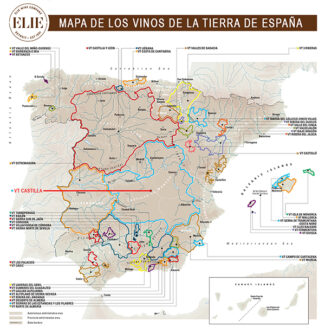
Uva de Vida
The Graciano Variety Takes Center Stage
“If we take care of the earth, we take care of ourselves,” promises Carmen López Delgado. “Life has given me a new opportunity.”
She is alluding to the sudden illness and prolonged recovery that refocused her cosmic viewpoint and convinced her that her personal renewal could be mirrored in the ways she tended a vineyard. “We made this decision when my illness pushed us to look for everything related to living and life in seeking to recover health.”
In 2005, with her partner Luis Ruiz, she pioneered biodynamic agriculture and winemaking throughout a 20-acre vineyard in Santa Olalla near Toledo. The dry continental climate of central Spain was ideal for the cultivation of Graciano, of which she planted twelve acres compared to five of Tempranillo. That alone makes her iconic; Graciano is rare enough in Spain, let alone among the cereal fields and Cornicabra olive groves of Castilla-La Mancha.
Lopez’s spiritual journey in both life and viniculture is reflected in the Mandala symbol that appears on her labels; it mirrors the geometric layout of her vineyards. The eight-pointed star references Toledo’s Arabic and Jewish past as well as illustrating the tenuous, if stable balance between spirit and matter. It is part of a larger movement in winemaking that stresses an irreplaceable symbiosis of the grower and the vineyard.
Channeling the correct energy is as vital to Lopez’s philosophy as is her stand against artificial preservatives in food and wine: “These substances are harmful to people’s health, sulfites especially; they are toxic and, for wine, they are an atomic bomb.” Her dedication has been noted: Uva de Vida is one of the few Spanish members of the prestigious biodynamic association ‘La Renaissance des Appellations’ to which only 175 wine growers worldwide belong.

The Biodynamic Principles: Spirituality and the Force of Nature
Says Maria Carmen López Delgado: “We think that biodynamics is the means to achieve in the vineyard a self-regulated ecosystem, independent and free of all chemistry. Biodynamics is a path of knowledge. To know our culture, the soil, the climate… to know oneself.” This implies a special connection between the person and the vineyard.
Walking the walk as well as she talks it, she maintains that she and Luis are ‘spectators’ accompanying the natural process of vine tending and fermentation. This allows them to take into account the lunar calendar when they plan racking and bottling while adhering to agricultural ‘hands-off’ means more flora and fauna exist in the vineyard.
“In biodynamics there are no recipes,” Lopez insists. “Biodynamics is an impulse, an understanding, an inspiration. It entails a result, but the result is not the end: Each year, we interpret what we believe the vineyard needs so as not to distort its relationship with the environment and then we allow nature express itself with total freedom. Biodynamic preparations activate the processes of life; the basis of biodynamics is to invigorate the soil, but the most important thing is the intention of the person, the imprint, the imprint. Even the thoughts of people are capable of generating living forces.”
The special offer includes the following four wines: Septenio (one bottle), Latitud 40 (two bottles), Biográfico (two bottles), and Rosado Ancestral (one bottle) for a total of six bottles pack for $173.
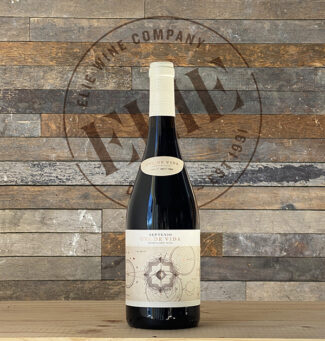 ‘Septenio’ 2012 (Vino de España) ($54)
‘Septenio’ 2012 (Vino de España) ($54)
100% Graciano from the estates prized northeast and southeast facing slopes, where grapevines share its sun-drenched clay-limestone terroir with olive trees and grain. Entirely hand-harvested, Delgado allows a four-day maceration before natural fermentation in stainless steel. After pressing, the wine spent two years in used French oak, and prior to being bottled in 2016, it was topped off with a percentage of younger wine from 2013, 2014 and 2015, giving it a complex, multi-dimensional profile. Luxardo cherries, black currants and orange peel notes are lined with spicy wood accents and fresh tobacco leaf. Only 1,664 bottles produced.
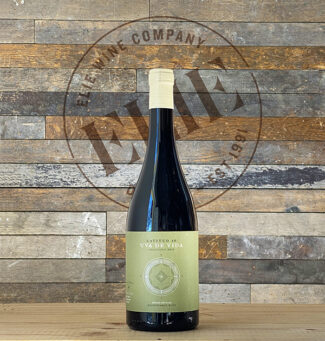 ‘Latitud 40’ 2018 (Vino de la Tierra de Castilla) ($24)
‘Latitud 40’ 2018 (Vino de la Tierra de Castilla) ($24)
Uva de Vida winery sits at the wine-friendly 40˚ northern latitude, which circumvents the globe to include northern California, Sardinia and about half of the wine producing areas in China. Here, forty miles south of Madrid, it suits Graciano—the sole varietal used here. Although the ‘Vino de la Tierra de Castilla’ designation carries with it slightly less stringent regulations that the prestigious DOs of Castilla-La Mancha, like the ‘Super Tuscans’, gems may be found among the iconoclasts. Ideally served slightly chilled, ‘Latitud 40’ displays freshness on the nose with hints of lilac, menthol and pie cherries. On the palate, wild blueberries take center stage and the menthol shows a mint-leaf edge. The finish is long and juicy with a slight hint of chocolate. 20,000 bottles made.
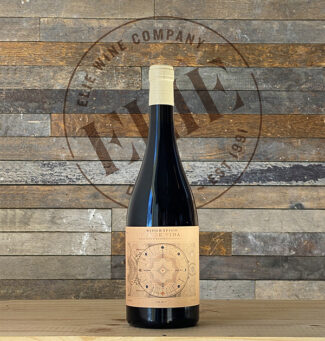 ‘Biográfico’ 2020 (Vino de la Tierra de Castilla) ($20)
‘Biográfico’ 2020 (Vino de la Tierra de Castilla) ($20)
The 2020 version of this vibrant wine contains a 50/50 blend of Tempranillo and Graciano grown in clay-limestone soils at an altitude of about 1600 feet. Hand-harvested and fermented on ambient yeasts, the wine is clarified naturally and bottled unfiltered without sulphur. The dark color belies a lyrical, almost floral quality to the wine; lilac and violet notes appear on the nose, with bright, spicy red fruit supplied by the Graciano tempered with the earthy tannins of Tempranillo. 8,800 bottles produced.
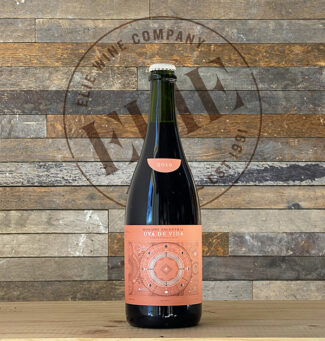 ‘Rosado Ancestral’ 2019 (Vino de la Tierra de Castilla) ($31)The 2019 Rosado Ancestral is 100% Tempranillo, the product of the youngest vines in Delgado’s Santa Olalla property. It is produced by allowing only minimal skin contact with red grapes; it is intended to be a light, fresh, chillable rosado—the Spanish version of rosé. A pretty nose of rose petals, fresh almonds and wild strawberries and a palate of succulent acidity that balances the impression of sweetness. 1700 bottles made.
‘Rosado Ancestral’ 2019 (Vino de la Tierra de Castilla) ($31)The 2019 Rosado Ancestral is 100% Tempranillo, the product of the youngest vines in Delgado’s Santa Olalla property. It is produced by allowing only minimal skin contact with red grapes; it is intended to be a light, fresh, chillable rosado—the Spanish version of rosé. A pretty nose of rose petals, fresh almonds and wild strawberries and a palate of succulent acidity that balances the impression of sweetness. 1700 bottles made.
Also available from Uva de Vida ….
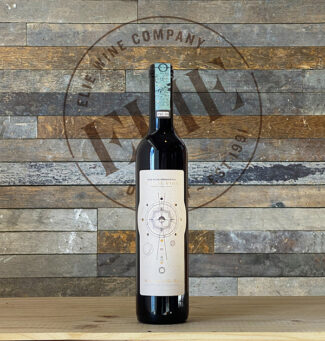 ‘Esencia Oxidativa’ 2012 (Vino de España) ($39) An extremely rare beast; only 157 bottles made, and they are 500 ml. at that. Oxidation is a process familiar to lovers of dry-aged Spanish sausages and salamis, wherein the producer sacrifices a bit the original item to yield a more complex and fulfilling final product. In meat, this is done by stressing the original stock with exposure to oxygen to provoke its best traits to come forward in defense. This is also done with wine, most notably in Jerez with sherry. Uva de Vida has produced this effect with the 100% Graciano ‘Esencia Oxidativa,’ harvested and vinified with the same biodynamic intensity of the rest of the wines from this estate, it underwent exposure to oxidation over many years in used 225 liter oak barrels. The finished wine is 16% alcohol and shares characteristics with the classic Oloroso Sherry of Jerez, but in a red-wine package; nutty, yeasty, and filled with the unique quality know to gastronomes as ‘umami’. In fact, this is due to the increase of glutamate produced when wine interacts with air.
‘Esencia Oxidativa’ 2012 (Vino de España) ($39) An extremely rare beast; only 157 bottles made, and they are 500 ml. at that. Oxidation is a process familiar to lovers of dry-aged Spanish sausages and salamis, wherein the producer sacrifices a bit the original item to yield a more complex and fulfilling final product. In meat, this is done by stressing the original stock with exposure to oxygen to provoke its best traits to come forward in defense. This is also done with wine, most notably in Jerez with sherry. Uva de Vida has produced this effect with the 100% Graciano ‘Esencia Oxidativa,’ harvested and vinified with the same biodynamic intensity of the rest of the wines from this estate, it underwent exposure to oxidation over many years in used 225 liter oak barrels. The finished wine is 16% alcohol and shares characteristics with the classic Oloroso Sherry of Jerez, but in a red-wine package; nutty, yeasty, and filled with the unique quality know to gastronomes as ‘umami’. In fact, this is due to the increase of glutamate produced when wine interacts with air.
Decoding the Label
Vinos de La Tierra V.T. (Indicación Geográfica Protegida I.G.P.) and Denominación de Origen D.O. (Denominación de Origen Protegida D.O.P.)
At Elie’s, our specialties include highly-allocated, top-tier D.O.P. (Denominación de Origen Protegida) Spanish wines, but we are always on the lookout for spectacular values regardless of label. This week’s package includes a number of wines designated Vinos de La Tierra V.T. (Indicación Geográfica Protegida I.G.P.).
A word on the difference: A specific D.O.P is governed by a ‘consejo regulador’, which decides on the boundaries of the region, allowed varietals, maximum yields, limits of alcoholic strength and similar standards and limitations; as of 2019 there are 96 DOPs in Spain. V.T. wines, and there are 46 demarcated production areas (see above map), follow rules that are slightly less stringent, allowing a winemaker greater freedom to experiment, especially with grape varieties. VT wines are most assuredly high-quality, single-estate wines that may, in all other quality measures, be identical to D.O.P. wines—a rung down the designation ladder in name alone.
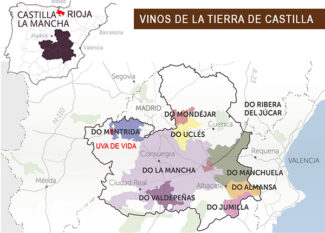
- - -
Posted on 2023.01.11 in La Tierra de Castilla, France, Spain DO, Wine-Aid Packages
Featured Wines
- Notebook: A’Boudt Town
- Saturday Sips Wines
- Saturday Sips Review Club
- The Champagne Society
- Wine-Aid Packages
Wine Regions
Grape Varieties
Aglianico, Albarino, Albarín Blanco, Albarín Tinto, Albillo, Aleatico, Arbanne, Aubun, Barbarossa, barbera, Beaune, Biancu Gentile, bourboulenc, Cabernet Franc, Cabernet Sauvignon, Caino, Caladoc, Calvi, Carcajolu-Neru, Carignan, Chablis, Chardonnay, Chasselas, Clairette, Corvina, Cot, Counoise, Erbamat, Ferrol, Fiano, Frappato, Friulano, Fromenteau, Fumin, Garnacha, Gewurztraminer, Godello, Graciano, Grenache, Grolleau, Groppello, Juan Garcia, Lambrusco, Loureira, Macabeo, Macabou, Malvasia, Malvasia Nera, Marsanne, Marselan, Marzemino, Melon de Bourgogne, Merlot, Mondeuse, Montanaccia, Montepulciano, Morescola, Morescono, Moscatell, Muscadelle, Muscat, Natural, Nero d'Avola, Parellada, Patrimonio, Petit Meslier, Petit Verdot, Pineau d'Aunis, Pinot Auxerrois, Pinot Blanc, Pinot Gris, Pinot Meunier, Pinot Noir, Poulsard, Prieto Picudo, Rondinella, Rousanne, Roussanne, Sangiovese, Sauvignon Blanc, Savignin, Semillon, Souson, Sparkling, Sumoll, Sylvaner, Syrah, Tannat, Tempranillo, Trebbiano, Trebbiano Valtenesi, Treixadura, Trousseau, Ugni Blanc, vaccarèse, Verdicchio, Vermentino, Viognier, Viura, Xarel-loWines & Events by Date
- April 2024
- March 2024
- February 2024
- January 2024
- December 2023
- November 2023
- October 2023
- September 2023
- August 2023
- July 2023
- June 2023
- May 2023
- April 2023
- March 2023
- February 2023
- January 2023
- December 2022
- November 2022
- October 2022
- September 2022
- August 2022
- July 2022
- June 2022
- May 2022
- April 2022
- March 2022
- February 2022
- January 2022
- December 2021
- November 2021
- October 2021
- September 2021
- August 2021
- July 2021
- June 2021
- May 2021
- April 2021
- March 2021
- February 2021
- January 2021
- December 2020
- November 2020
- October 2020
- September 2020
- August 2020
- July 2020
- June 2020
- May 2020
- April 2020
- March 2020
- February 2020
- January 2020
- December 2019
- November 2019
- October 2019
- September 2019
- August 2019
- July 2019
- June 2019
- May 2019
- April 2019
- March 2019
- February 2019
- January 2019
- December 2018
- November 2018
- October 2018
- September 2018
- August 2018
- July 2018
- June 2018
- May 2018
- April 2018
- March 2018
- February 2018
- January 2018
- December 2017
- November 2017
- October 2017
- September 2017
- August 2017
- July 2017
- June 2017
- May 2017
- April 2017
- March 2017
- February 2017
- January 2017
- December 2016
- November 2016
- October 2016
- September 2016
- August 2016
- July 2016
- June 2016
- May 2016
- April 2016
- March 2016
- February 2016
- January 2016
- December 2015
- November 2015
- October 2015
- September 2015
- August 2015
- July 2015
- June 2015
- May 2015
- April 2015
- March 2015
- February 2015
- January 2015
- December 2014
- November 2014
- October 2014
- September 2014
- August 2014
- July 2014
- June 2014
- April 2014
- March 2014
- February 2014
- January 2014
- December 2013
- November 2013
- October 2013
- September 2013
- August 2013
- July 2013
- June 2013
- May 2013
- April 2013
- March 2013
- February 2013
- January 2013
- December 2012
- November 2012
- October 2012
- February 2004
Search



